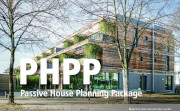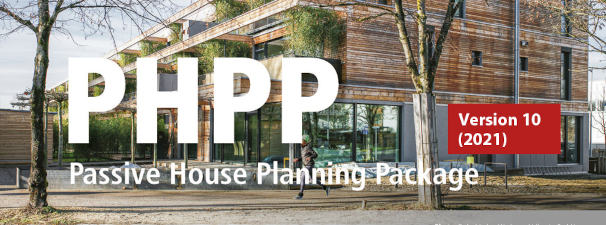Passive House Planning Package (PHPP)
The energy balance and planning tool for efficient buildings and refurbishments
|
The PHPP is an easy to use planning tool for energy efficiency for the use of architects and planning experts. The reliability of the calculation results and ease of use of this planning tool has already been experienced by several thousand users. PHPP 10 | IP-PHPP 9 | designPH| Workshops | Validation studies | PHPP Tools | Examples) |
PHPP news:
easyPH – simplified certification of single-family homes
PHPP10
PHPP 10 is available – in the well known Excel-format, with a simpler look and with an online flipbook instead of the printed manual. Several new features and a few new worksheets were added. Furthermore, new external tools to facilitate the data entry with secundary calculations have been added.
Planning Passive House buildings and NZEBs – made easy with the PHPP
The tried and tested Passive House Planning Package provides reliable results for the following:
|
The advantages of the Passive House Planning Package
Learn more about PHPP in Passipedia
System requirements and license type
The PHPP is based on a MS-Excel-workbook in the xlsx-/xlsm-format. Microsoft Windows and Microsoft Excel 2013 (or higher) are system requirements. On Macintosh, PHPP works with Excel for Mac 2016 (or higher). As far as the authors are aware, the PHPP can also be used with current versions of LibreOffice, however without support of the implemented macro tools, e.g. for the data import. In general, depending on the platforms used as spreadsheet program, their programming or general settings, there may be limited functionality of the calculation tool or the additional macro tools.
PHPP is only provided as single-user license, including a detailed manual. With the license the PHPP user obtains a registration code which is used to register the PHPP license. Based on this registration, the user will receive access to the download of PHPP, the online flipbook manual, and to updates of the calculation tool, or upgrade discounts for new versions of PHPP or designPH
PHPP 10 – the current version of PHPP with new features
|
|
|
The calculation of he overheating frequency was supplemented with a stress test for summer comfort when passive cooling concepts are used. Summer comfort and the frequency of overheating are greatly dependent on the behaviour of occupants in the building, which influences factors such as air exchange via windows in the summer, night ventilation, temporary shading or internal heat gains. Besides a set of pre-defined risk parameters, the manual input of different user behaviours is also possible |
|
|
In the worksheet MONI, the PHPP calculation can be adjusted to actual boundary conditions such as weather data or room temperatures, in a given measurement period in order to make the actual consumption values comparable with the calculation results in the PHPP. Several results in PHPP, like heating demand, energy demand for domestic hot water or electricity, can thereby be compared to monitoring results |
|
|
The Passive House Planning Package PHPP 10 contains a new external too, the so-called Room Data tool. The Room Data tool allows the systematic determination of essential input variables for the PHPP providing assistance especially for complex projects. It can easily be extended and adapted depending on the requirements of the project. The calculated intermediate results can be transferred into the PHPP. |
|
Apart from this, the file also includes the Record worksheet which is a systematic record of changes during planning, and their impact on the main energy efficiency results of the building, thus making them traceable. |
|
|
This worksheet was supplemented with input variables for renewable energy generation from solar thermal systems and photovoltaics. Thereby it is also possible to include renewable energy sources into the EnerPHit Retrofit Plan, ERP, and thereby demonstrate the achievement ot he EnerPHit classes Plus or Premium for staged retrofits. |
|
|
This project overview has been redesigned and further developed, including new result charts, and a column to export data which enables the transfer of relevant information into the Passive House project database. |
|
|
New certified components categories have been added to PHPP. In addition to heat pumps you can now enter combined ventilation and split units. In the worksheet cooling, the seasonal energy efficiency ratio of the cooling units can now be determined more accurately based on the device properties. Other types of operation, e.g. combined supply air and recirculation cooling via the ventilation system were added. |
|
|
The input of transparent components was extended and now also allows the input of windows with multiple panes or curtain wall façades in a single row. In this way, values for threshold profiles or the geometry of different frame sections can also be entered. |
Passive House Planning Package – a tried and tested planning tool
The PHPP based on Excel was introduced for the first time in 1998 and has been continually further developed ever since. Calculation sheets for space heating balances (annual and monthly methods), and for heat distribution and supply as well as for the electricity and primary energy demand, constitute the main features of this tool. Essential modules were successively supplemented for the practical planning of energy efficiency projects throughout the world, including the calculation of characteristic values of windows, shading, heating load and summer behaviour, cooling and dehumidification demand, ventilation for large objects and non-residential buildings, taking into account of renewable energy sources, and EnerPHit certification (retrofitting of existing buildings). The PHPP is continually being validated and extended on the basis of measured values and new research findings.
In the context of accompanying scientific research in several objects, measured results were compared with the calculated results. In the process, a high correlation could be demonstrated between the demand calculated using the PHPP and the consumption ascertained through scientific monitoring projects. With careful planning of building efficiency, there will be no performance gaps.
IP-PHPP 9 – in imperial unit system
|
A special version of Pasive House Planning Package allows the complete data input based on the imperial unit system. The IP-PHPP was developed specially for the North American market where this system is used by numerous designers and architects. Entering project data for Passive House buildings, EnerPHit retrofits or other highly efficient buildings is thus greatly facilitated. As in the standard version of the PHPP, the IP-PHPP comes with an import/export interface which enables data transfer from one IP-PHPP to another. In addition, an export macro prepared by the Passive House Institute has also been provided – which allows data to be exported from the IP-PHPP into the metric PHPP. |
IP-PHPP users can also enter their projects in 3D with the SketchUP-plugin designPH, before refining the data in the IP-PHPP.
designPH – 3D data entry tool for the Passive House Planning Package
designPH is an ideal addition to the Passive House Planning Package, and has the following advantages:
|
|
The latest version designPH 2.0 does not just ensure compatibility with PHPP 10; one of the new features includes automatic identification and calculation of the shading parameters even during the analysis with the 3D tool, therefore optimisation of a building's shading parameters is already possible in SketchUP.
. 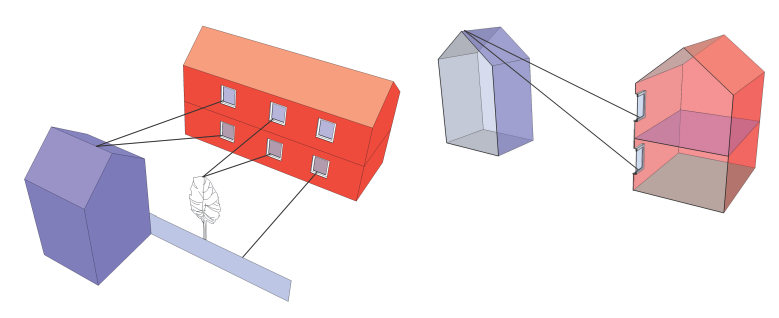
designPH DEMO version
Further information
FAQ
PHPP and PHPP & designPH workshops
Order PHPP and designPH online
iPHA members receive a discount.
Further information:
PHPP 10 – Foreword (![]() pdf)
pdf)
PHPP 10 – New features (![]() pdf)
pdf)
PHPP 10 – Sequence of entries (![]() pdf)
pdf)
Additional tools for the PHPP
Information on other passive house planning tools
Further tools and plugins
Examples:
PHPP example for end of terrace house
PHPP example for step-by-step energy efficient refurbishment
EnerPHit Retrofit Plan
| Next Courses |
PHPP Expert
Passive House Designer / Consultant
Construction Verifier
Site Supervisor
![]() read more
read more
e-learning
| Events |
iPHA Webinar "Project Spotlight: The CLT 8-floor ANMF hotel in Melbourne, Australia with heritage overlay." | November 12, 2025
![]() read more
read more
![]() Passive House Open Days |
Passive House Open Days |
7 - 9 November 2025
![]() read more
read more
![]() 24 - 25 April 2026, Essen, Germany
24 - 25 April 2026, Essen, Germany
![]() read more
read more
| Component Database |
 Passive House
Passive House
Component Database
read more
| Projects |
| New developments |
![]() designPH
designPH
read more
![]() NEW: PHPP 10 (2021)
NEW: PHPP 10 (2021)
read more
 Seals for Certified Passive House Components
Seals for Certified Passive House Components
read more
 Passive House Classes,
Passive House Classes,
Classic, Plus, Premium
read more
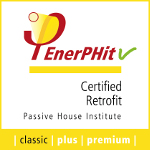 EnerPHit -
EnerPHit -
PHI certification for retrofits
read more
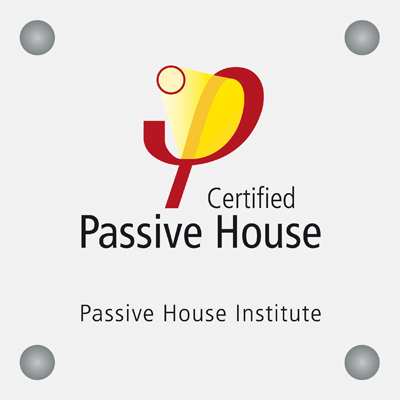 Wall plaque
Wall plaque
for certified Passive Houses
read more
| Press releases |
| Research & Literature |
![]() Passive Houses for different climate zones
Passive Houses for different climate zones
more
 Retrofits with Passive House components -
Retrofits with Passive House components -
EnerPHit Planner Handbook
(in German)
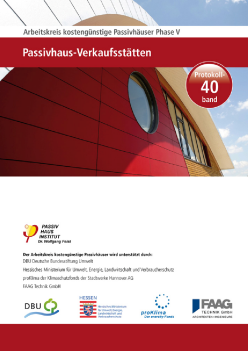 Passive House Retail Stores now out
Passive House Retail Stores now out
Overview of contents
(in German)


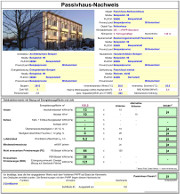 .
.